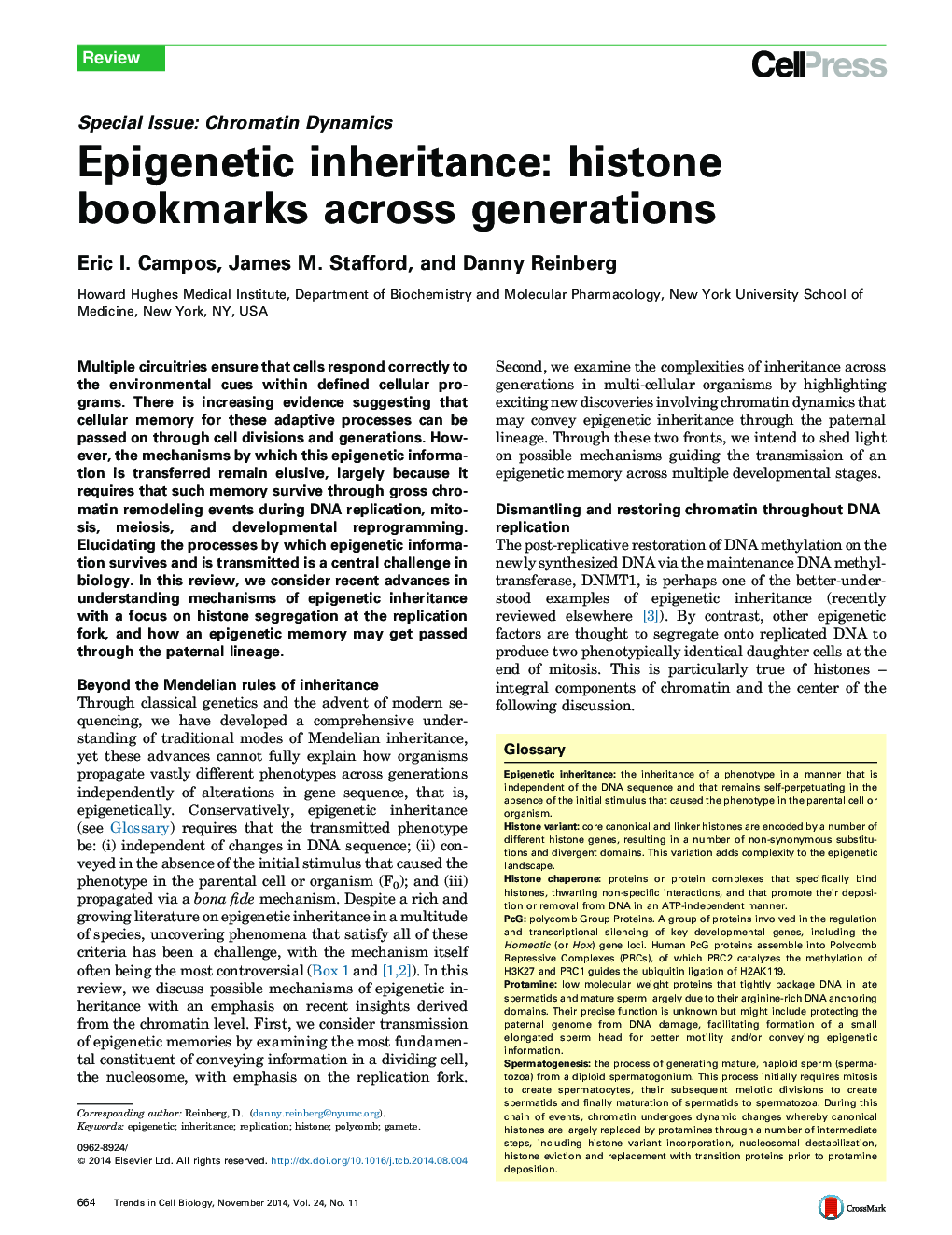| Article ID | Journal | Published Year | Pages | File Type |
|---|---|---|---|---|
| 2204387 | Trends in Cell Biology | 2014 | 11 Pages |
•Histone modifications can persist over multiple cell divisions.•The acquisition of histone marks and full maturation of chromatin continues beyond S-phase.•Polycomb Group (PcG) proteins remain associated with replicated DNA.•Retained histones in sperm may be viable substrates for epigenetic inheritance.•Histones represent a mechanism for the survival of epigenetic information thru generations.
Multiple circuitries ensure that cells respond correctly to the environmental cues within defined cellular programs. There is increasing evidence suggesting that cellular memory for these adaptive processes can be passed on through cell divisions and generations. However, the mechanisms by which this epigenetic information is transferred remain elusive, largely because it requires that such memory survive through gross chromatin remodeling events during DNA replication, mitosis, meiosis, and developmental reprogramming. Elucidating the processes by which epigenetic information survives and is transmitted is a central challenge in biology. In this review, we consider recent advances in understanding mechanisms of epigenetic inheritance with a focus on histone segregation at the replication fork, and how an epigenetic memory may get passed through the paternal lineage.
